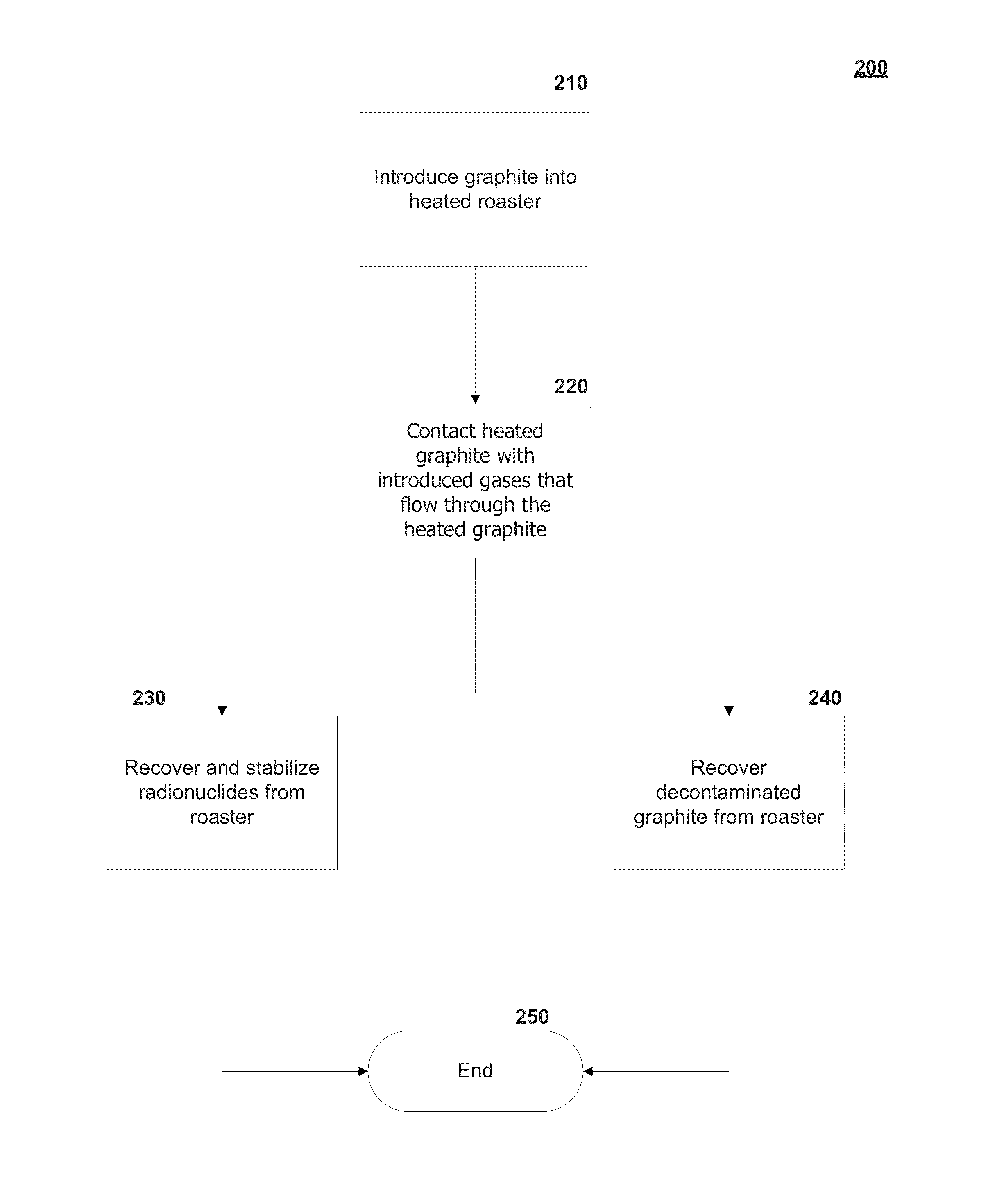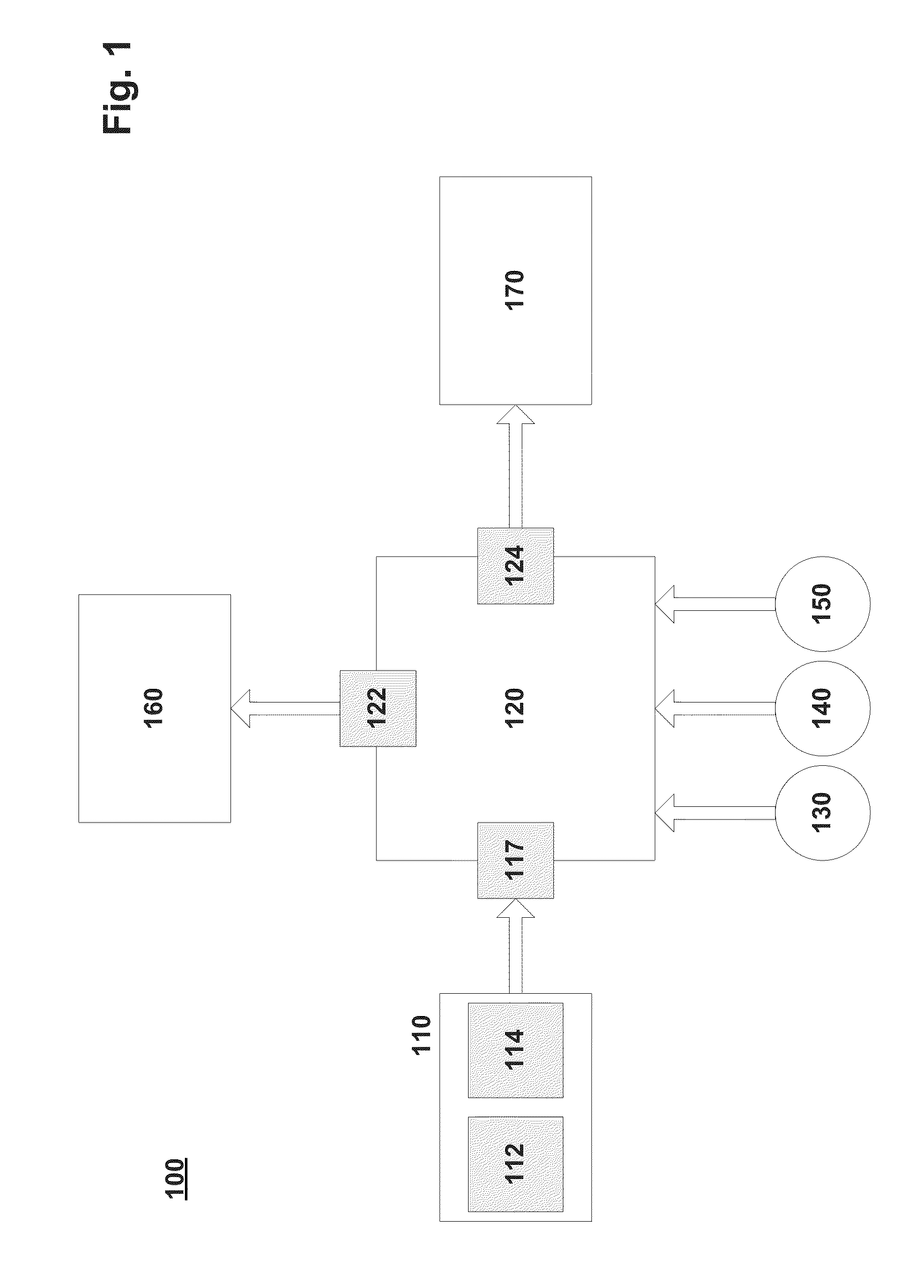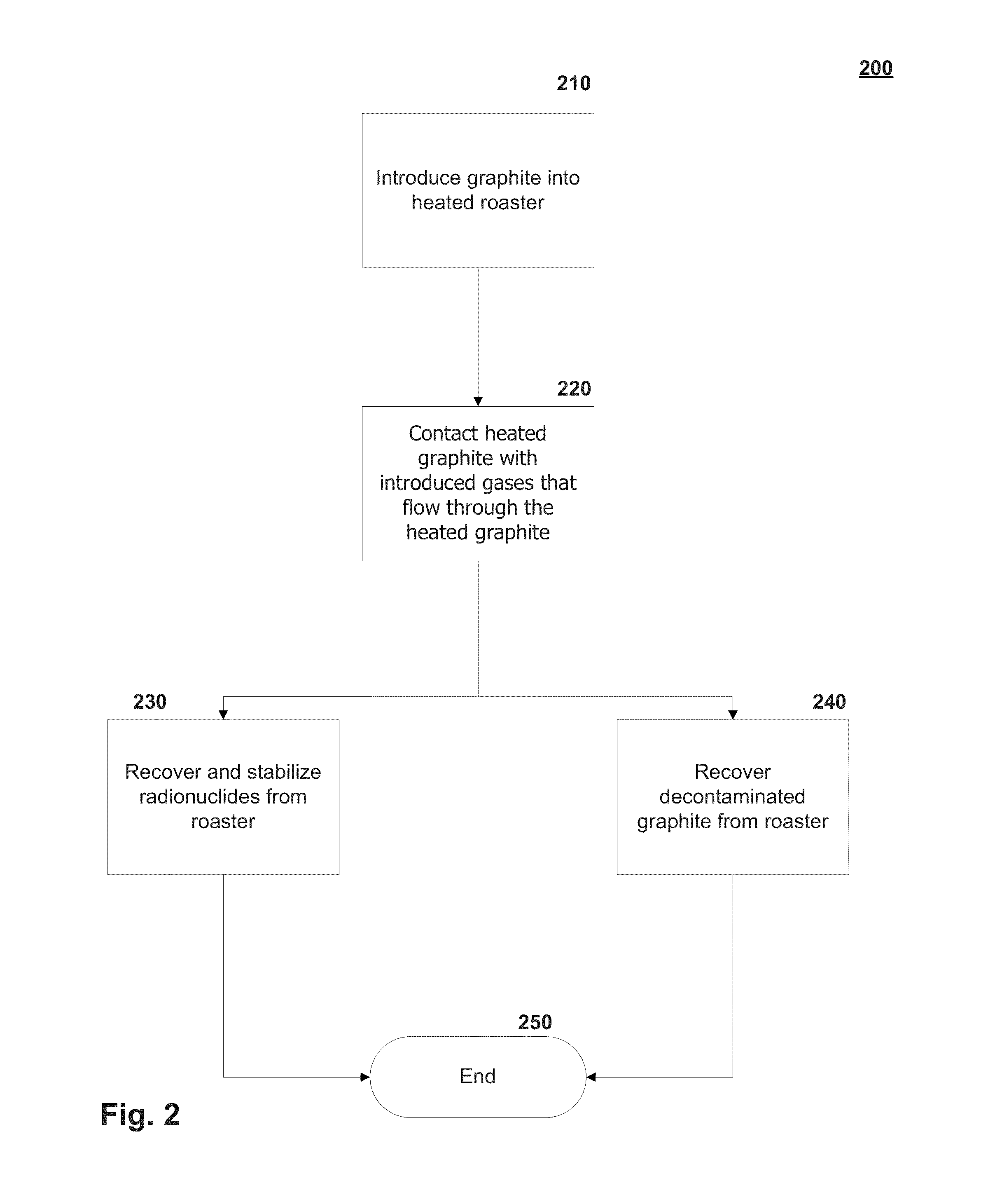Graphite thermal decontamination with reducing gases
a graphite and thermal decontamination technology, applied in the direction of radioactive decontamination, separation processes, nuclear engineering, etc., can solve the problems of difficult handling of graphite, large reduction or limitation of the amount of carbon-14 removal, and decay after a few tens of years, so as to reduce the size of graphite
- Summary
- Abstract
- Description
- Claims
- Application Information
AI Technical Summary
Benefits of technology
Problems solved by technology
Method used
Image
Examples
Embodiment Construction
[0024]The exemplary embodiments of the present invention provide systems and methods for treating radioactive graphite contaminated with tritium, carbon-14, and chlorine-36 and other radionuclides generated during the operation of a nuclear reactor or other nuclear process. The systems and methods include a roaster that operates at temperatures in the range of 800° Celsius to 2000° Celsius with inert, optional oxidizing and reducing gases. The combination of temperatures and gases allow for the removal of greater than 90 percent of the carbon-14 within the graphite while gasifying less than 5 percent of the bulk graphite.
[0025]FIG. 1 depicts a block diagram of a system 100 for treating radioactive graphite in accordance with an exemplary embodiment of the present invention. Referring to FIG. 1, a materials handling component 110 receives graphite to be treated in the system 100. Typically, the graphite was used as the moderator in a nuclear reactor core. Other sources of graphite in...
PUM
| Property | Measurement | Unit |
|---|---|---|
| size | aaaaa | aaaaa |
| temperature | aaaaa | aaaaa |
| size | aaaaa | aaaaa |
Abstract
Description
Claims
Application Information
 Login to View More
Login to View More - R&D
- Intellectual Property
- Life Sciences
- Materials
- Tech Scout
- Unparalleled Data Quality
- Higher Quality Content
- 60% Fewer Hallucinations
Browse by: Latest US Patents, China's latest patents, Technical Efficacy Thesaurus, Application Domain, Technology Topic, Popular Technical Reports.
© 2025 PatSnap. All rights reserved.Legal|Privacy policy|Modern Slavery Act Transparency Statement|Sitemap|About US| Contact US: help@patsnap.com



